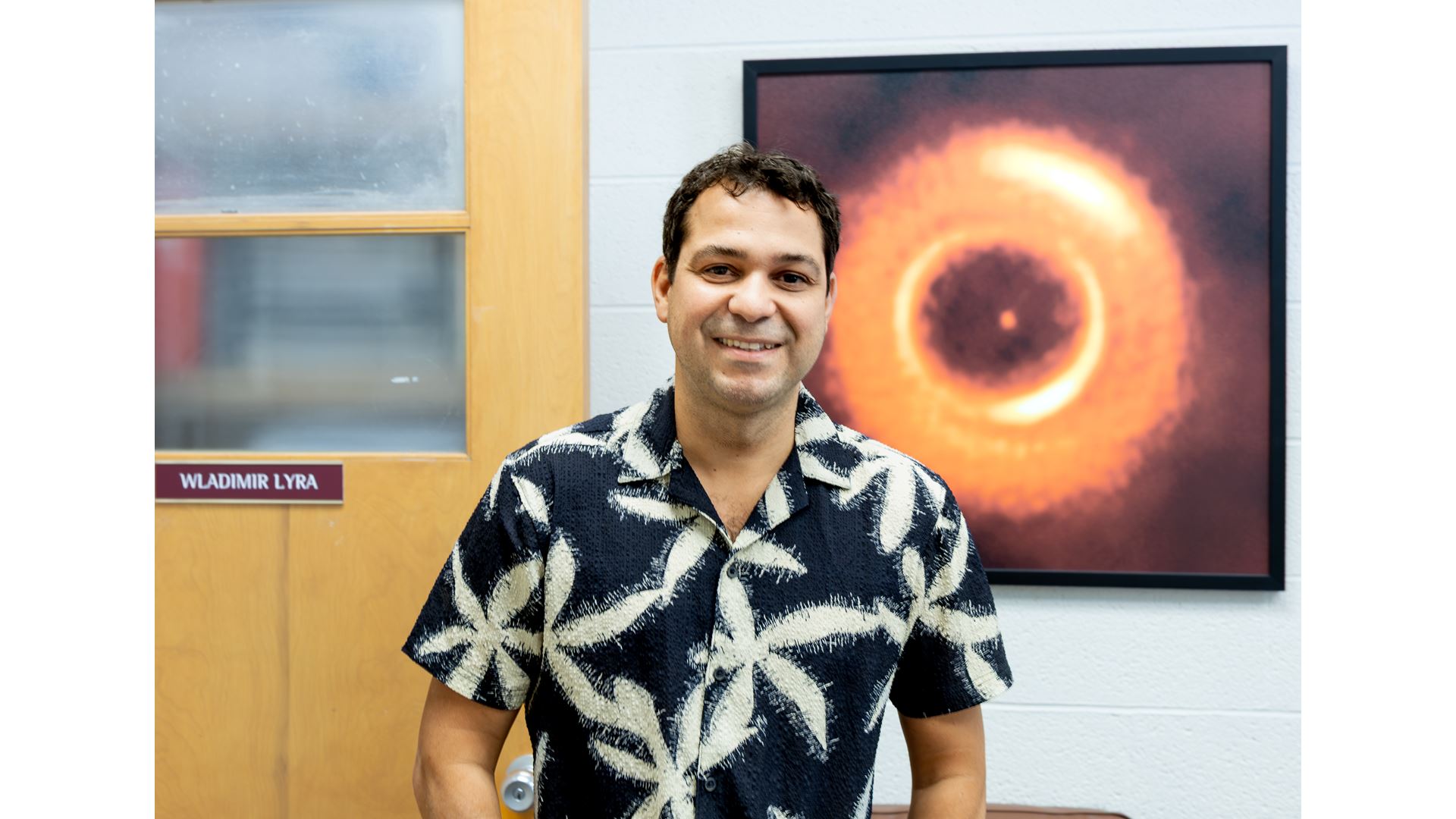Orbiting in the far reaches of the solar system are pristine remnants from its beginning. These unique objects, called planetesimals, are the building blocks of planets. In a new paper, New Mexico State University Astronomy Associate Professor Wladimir Lyra notices a gap in the data on these objects — raising questions that could help researchers better understand a key step in planet formation.
“There’s only one place we can go to find these planetesimals, and that’s the Kuiper Belt,” Lyra said. “That’s why it is interesting to planet formation theoreticians like me; spacecraft can go there and look at planetesimals in detail.” The Kuiper Belt is a region in the outer part of the solar system full of small, icy objects left over from the formation of planets. It’s also home to Pluto, discovered by the founder of NMSU’s astronomy department Clyde Tombaugh.
Lyra’s paper calls attention to a gap in the size range of objects in the Kuiper Belt. When looking at the mass data of binary systems, where two objects orbit each other, there are fewer binaries in the middle of the mass range than expected. This raised questions for Lyra; what causes this gap and what is it telling researchers about the planetary formation process?
The current model of planet formation starts with a disk of gas and dust surrounding a young star. As time passes, the dust clumps together into bigger grains, ranging from a millimeter to about the size of an inch.
“Imagine you don’t clean your room for ten million years. Those dust bunnies will get very, very big,” Lyra said.
As dust grains grow to about the size of pebbles, the next step in forming a planet is to get these objects to about the size of an asteroid. The question remains; what growth process bridges the gap between pebbles and the asteroid-sized planetesimals?
“It’s the rung on the ladder of planet formation that is the least understood,” Lyra said. “But once planetesimals form, they can grow by accreting more pebbles. We call this ‘pebble accretion’. If our theory is right, what we are seeing in the Kuiper Belt are, on the low-mass side, planetesimals that formed but didn’t grow. On the high-mass side are objects that grew by pebble accretion. But what happened in the middle?”
There are many compounding effects that make it difficult to observe planetesimal binaries in the Kuiper Belt. “We’re talking about objects that are separated by less than an arcsecond,” Lyra said. If you placed a dime about 2 miles away from you, the space it occupies from your perspective is the size of an arcsecond. These systems are so small, faint and far away that it requires a space-based telescope to pick them out of the night sky.
In his paper, Lyra offers two possible explanations for this mass gap. One option is that these observational challenges make it difficult to detect the binaries in the middle of the mass range, leaving many undiscovered. The other option is that binaries in this mass range don’t exist at all — the original satellite having been disrupted in the pebble accretion process. Either possibility could unlock more information about the way our solar system evolved.
“This gap is telling us something interesting, something we didn’t know before, about how planets are formed. I’m quite happy we stumbled on it,” Lyra said.
The next step in Lyra’s research is to work to address the observational bias against detecting objects within this mass range. By developing more specific parameters for properties like brightness and separation between the two objects in a binary system, he hopes to produce constraints to help observers detect more of them within this gap—if they exist.
“This is the scientific process in action. Theory only gets you so far. Observations only get you so far. Science advances when there is a dialogue between the two,” Lyra said.
“We are in a stage of this paradigm shift in planet formation where we’ve built a new theory, and we’re using this new theory to explain new data that comes in,” he added. “I think that’s the main beauty of this work. That’s what really excites me about it; putting another victory to the pebble accretion model of planet formation.”
Lyra’s paper “Where are the missing Kuiper Belt binaries?” is published in Icarus, a journal devoted to studies of solar system.
-30-
CUTLINE: New Mexico State University Astronomy Associate Professor Wladimir Lyra stands in front of an image of early solar system formation. (NMSU photo by Sarah Kimmerly)

